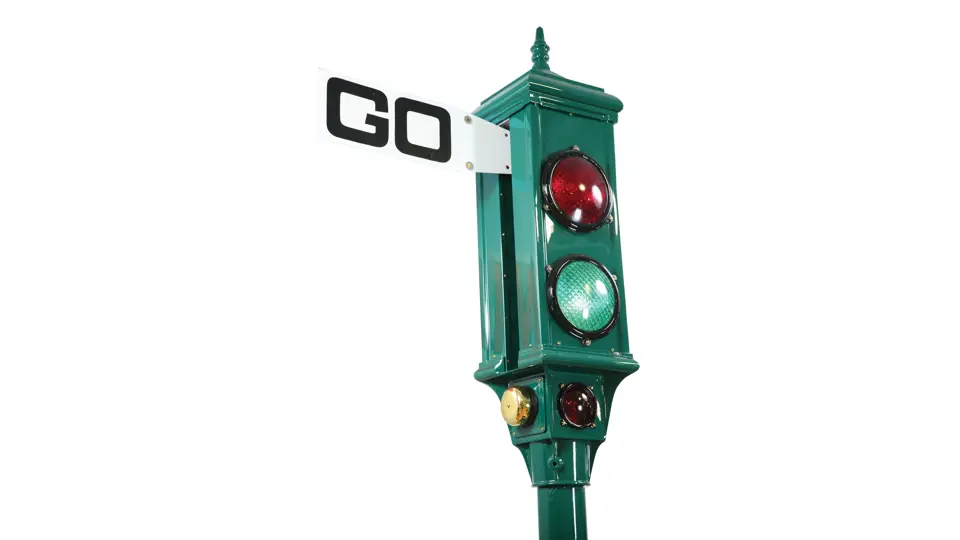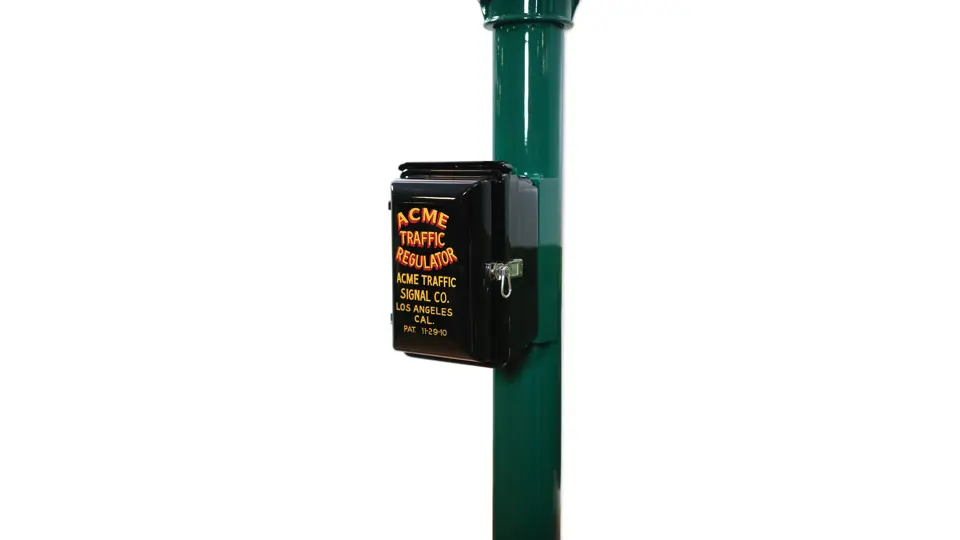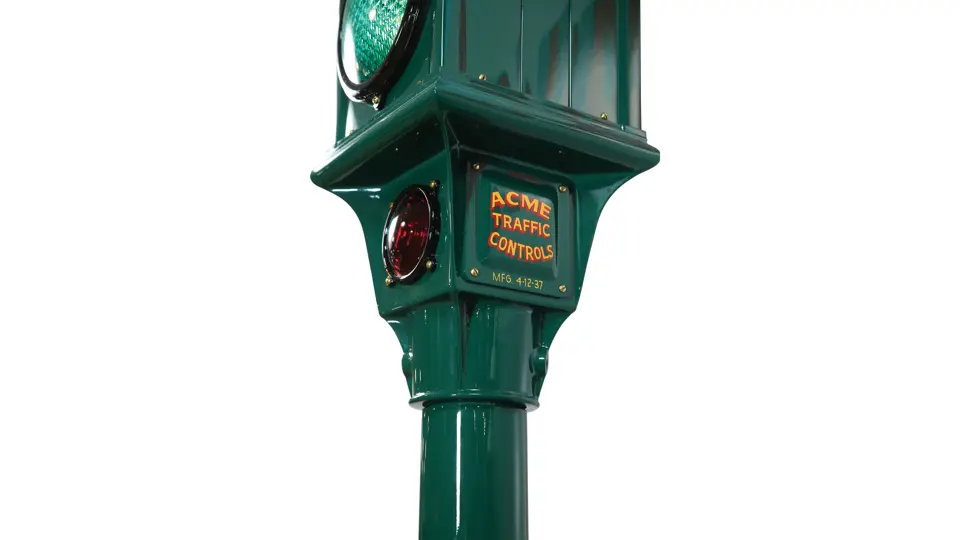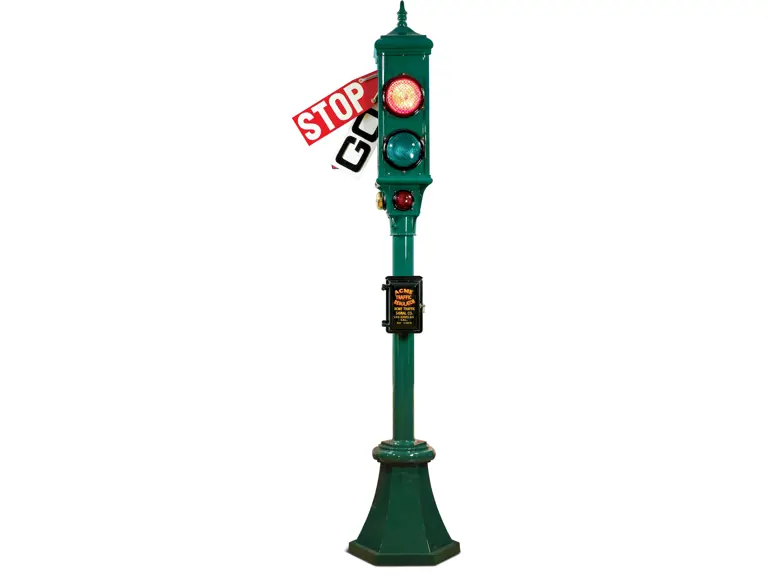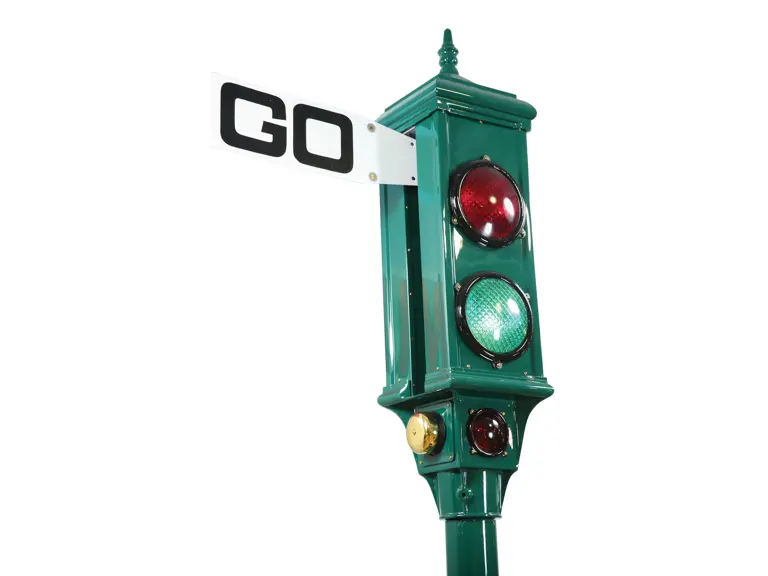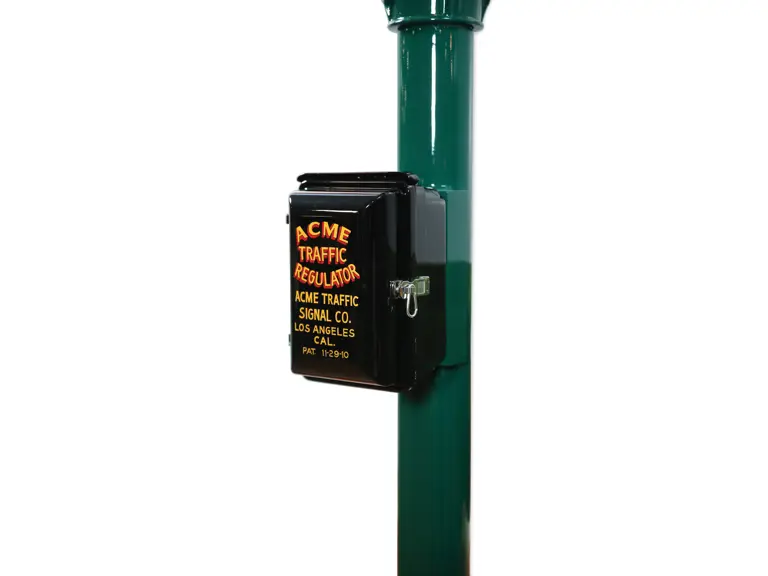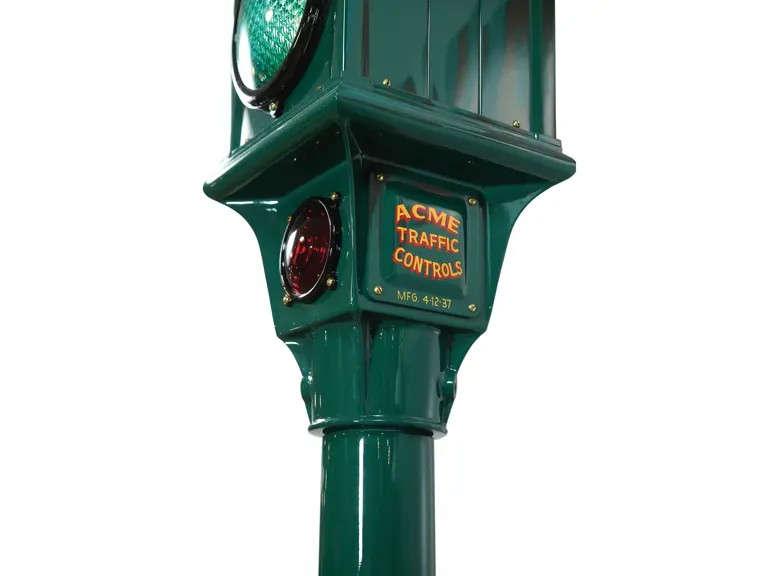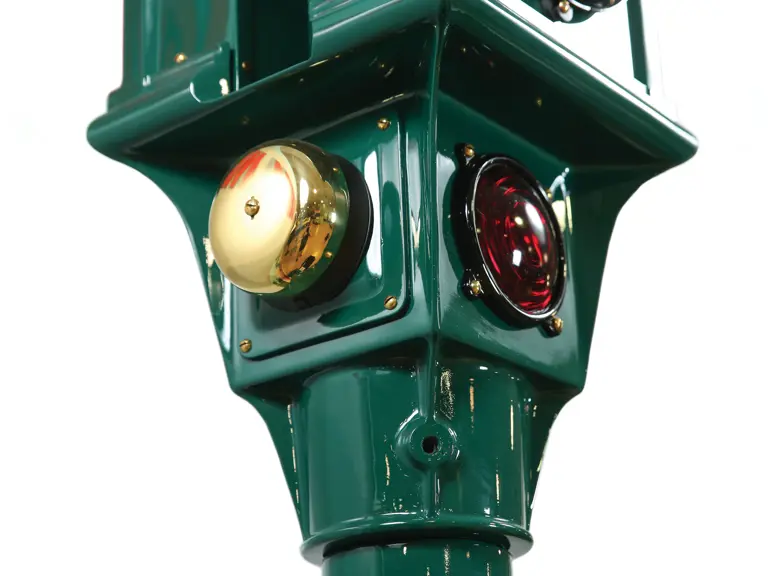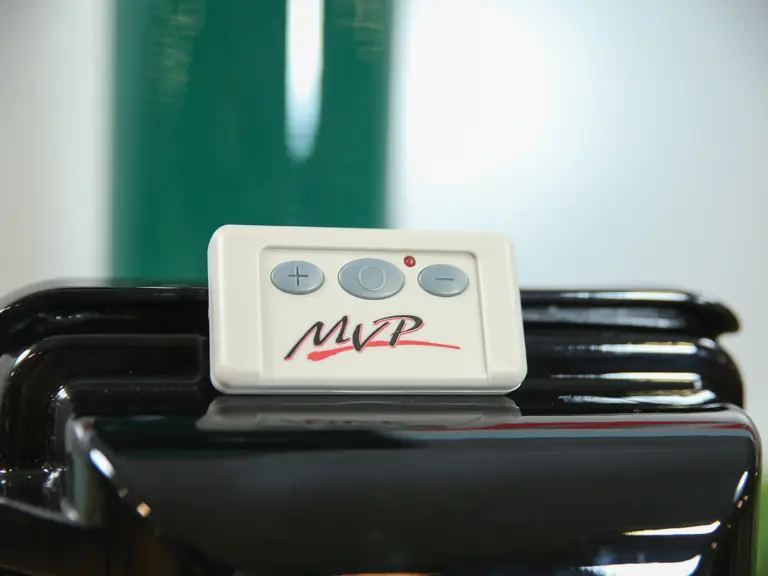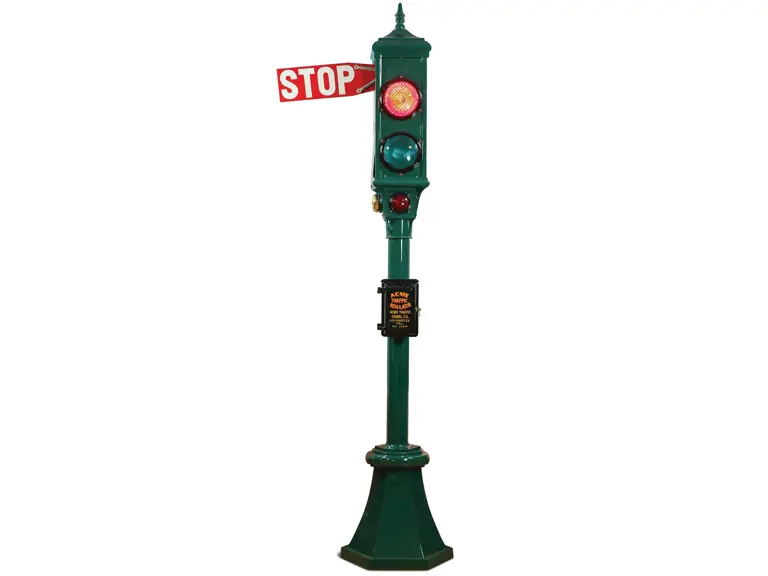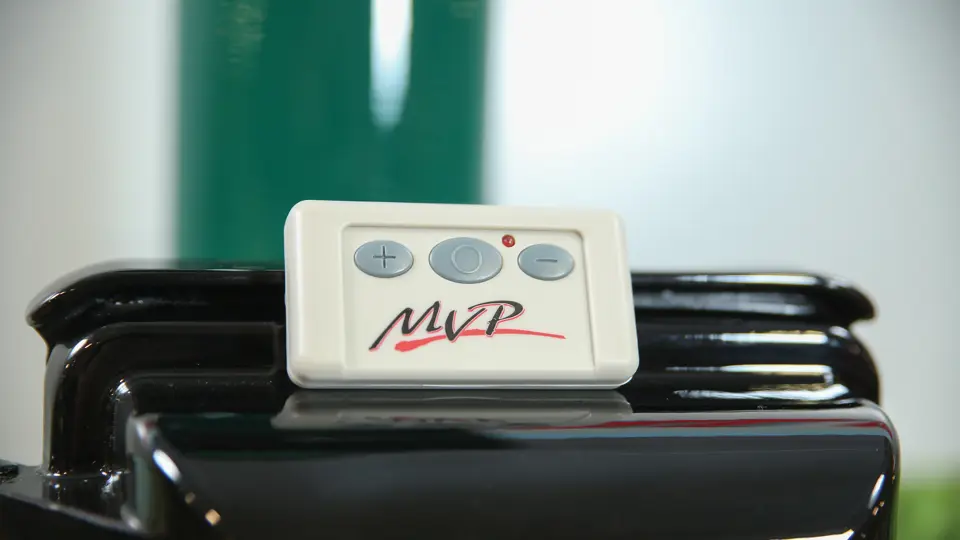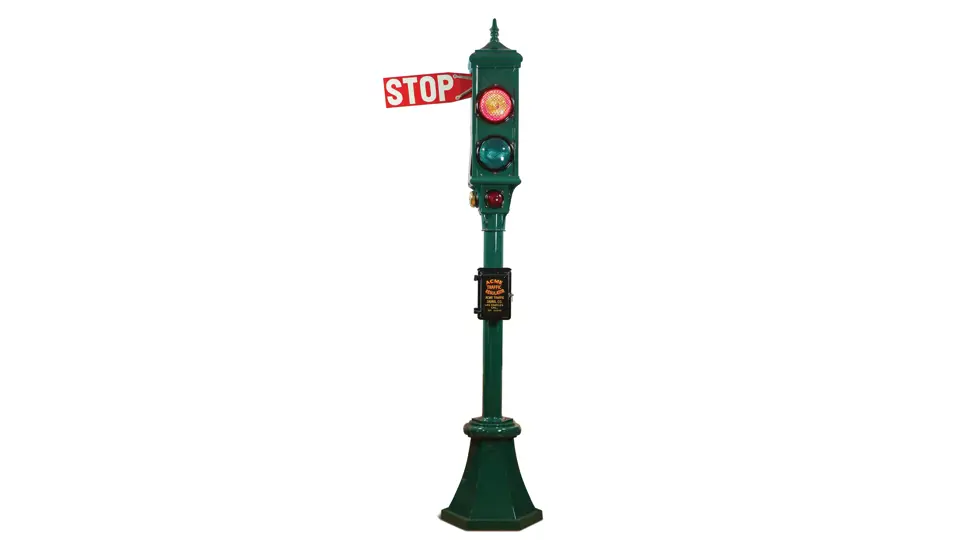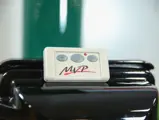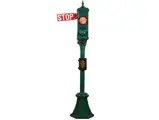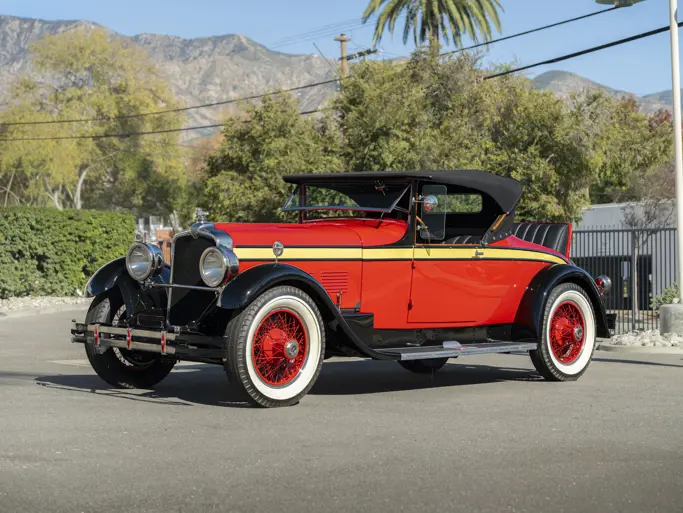 | New York, New York
| New York, New York
125 in. x 24 in. x 24 in.
Patented in 1917 by Frank J. Husbands of Los Angeles, California, the Acme traffic signal was unique among all traffic signals with its red and green Corning heat-resistant glass lenses, lettering, semaphore arms, and blinking amber light. By the late 1920s, there were nearly 1,000 Acme Traffic Regulators around LA. Yet, despite their ability to relieve traffic congestion, the traffic regulators had several drawbacks. Perhaps one of the most common hindrances was their ineffectual location on street corners, which made them difficult to spot behind vehicles waiting to turn. They were also difficult to maintain, as birds would nest in the slots of the semaphore arms.
Following a series of replacements and upgrades beginning in 1931, most of the Acmes were simply discarded in local junkyards. The last functional example, located at the corner of LA’s Main Street and Sunset Boulevard, was removed by workers in December 1956. A few survivors made their way into private collections and persist to this day; others exist in public collections, such as the Smithsonian Institute in Washington, D.C., and the Deer Park Winery and Automobile Museum in Escondido, California.
This meticulously restored example is believed to be one of only 11 surviving original examples. While the pole and base are modern reproductions, all of the internal operating gears and mechanisms have been preserved and fully restored, including the original Corning Glass lenses and indicator blades. The manufacturer’s tag remains affixed to the base and reads, “MFG DATE 4-12-37 Acme Traffic Controls.” With no notable flaws or imperfections, this attractive and very presentable example is a fascinating and extremely rare part of automobile history. The operating mechanism has been updated with a self-contained computer and remote control to cycle the signal through its various functions.
This is the first time that RM Sotheby’s has had the opportunity to offer a restored semaphore signal at auction, and it may well be a generation before a similar signal is offered for sale again.
